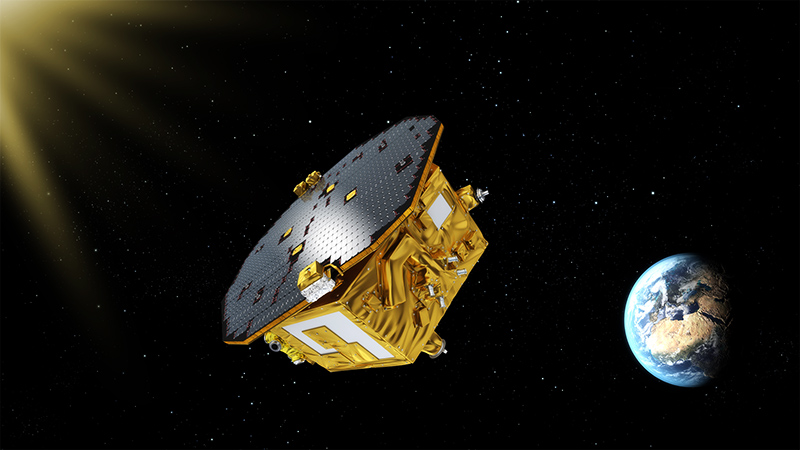In a significant advancement for astrophysics, NASA has unveiled a full-scale prototype of a telescope designed for the Laser Interferometer Space Antenna (LISA) mission. This pioneering project aims to detect gravitational waves—ripples in the fabric of space-time caused by astronomical events such as merging black holes and neutron stars. The full-scale prototype is a crucial step towards achieving the goal of space-based gravitational wave observatories within the next decade.
Understanding the LISA Mission
The LISA mission is a collaborative effort between NASA and the European Space Agency (ESA), with the primary goal of detecting gravitational waves through a highly sophisticated laser interferometry technique. The mission will involve three spacecraft positioned in a triangular formation, with each side measuring nearly 1.6 million miles (2.5 million kilometers). This vast configuration is essential for accurately measuring the minuscule changes in distances caused by passing gravitational waves.
At the heart of this ambitious mission are six telescopes that will be installed on the spacecraft. These telescopes will both transmit and receive infrared laser beams, enabling precise tracking of the spacecraft’s positions relative to one another. Ryan DeRosa, a researcher at NASA’s Goddard Space Flight Center, emphasized the importance of these telescopes in the mission’s success: “The prototype, called the Engineering Development Unit Telescope, will guide us as we work toward building the flight hardware.”
Prototype Features and Technology
The recently revealed Engineering Development Unit Telescope serves as a crucial benchmark in the development of the LISA mission’s observational technology. Manufactured by L3Harris Technologies in Rochester, New York, the prototype is designed to withstand the harsh conditions of space while providing exceptional precision in measurements.
One of the most notable features of the prototype is its primary mirror, which is coated in gold. This coating enhances the mirror’s ability to reflect infrared laser light and minimizes heat loss, ensuring optimal performance in the cold vacuum of space. The telescope is constructed from a specialized amber-colored glass-ceramic known as Zerodur, produced by Schott in Mainz, Germany. Zerodur is highly regarded for its thermal stability and minimal deformation across a wide temperature range, making it ideal for applications that demand high precision, such as telescope mirrors.
The Significance of Gravitational Wave Detection
Detecting gravitational waves is a groundbreaking frontier in astrophysics, offering new insights into some of the universe’s most violent events. By observing these waves, scientists can gain a deeper understanding of the origins and evolution of celestial objects, including black holes and neutron stars. LISA’s space-based capabilities will allow researchers to explore gravitational waves at frequencies that ground-based observatories cannot detect, thereby expanding our knowledge of the cosmos.
Future Prospects and Launch Timeline
The LISA mission is slated for launch in the mid-2030s, but the successful deployment of its prototype is just one of several critical steps needed to reach that goal. With the Engineering Development Unit Telescope now completed and undergoing rigorous testing, NASA and its partners are on track to finalize the design and production of the flight hardware.
As the project progresses, the collaboration between NASA and ESA underscores the importance of international partnerships in advancing space science. The LISA mission not only aims to revolutionize our understanding of gravitational waves but also to enhance our grasp of fundamental physics and the structure of the universe.
Conclusion
NASA’s unveiling of the LISA telescope prototype marks a pivotal moment in the quest to detect gravitational waves. This innovative technology promises to open new avenues in astrophysical research, allowing scientists to probe the depths of space-time and explore phenomena previously beyond our reach. As the mission moves forward, the prospect of unlocking the secrets of the universe through gravitational wave detection becomes increasingly tangible, heralding a new era in cosmic exploration.
